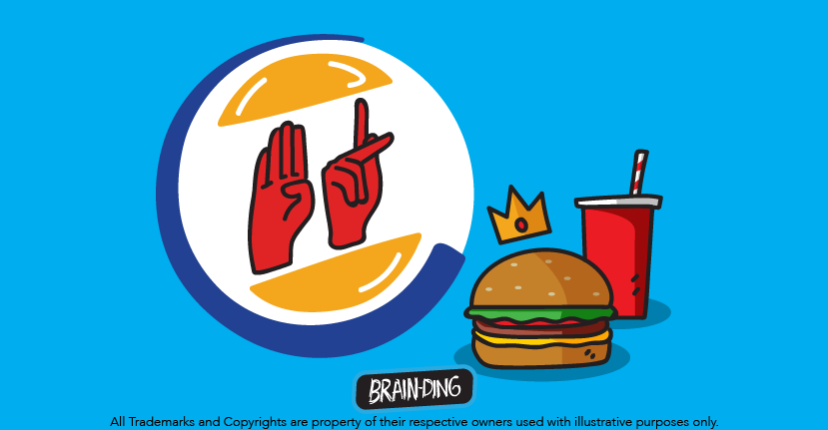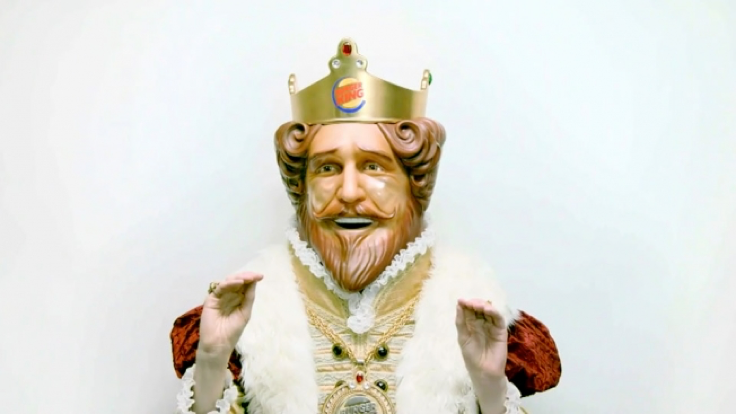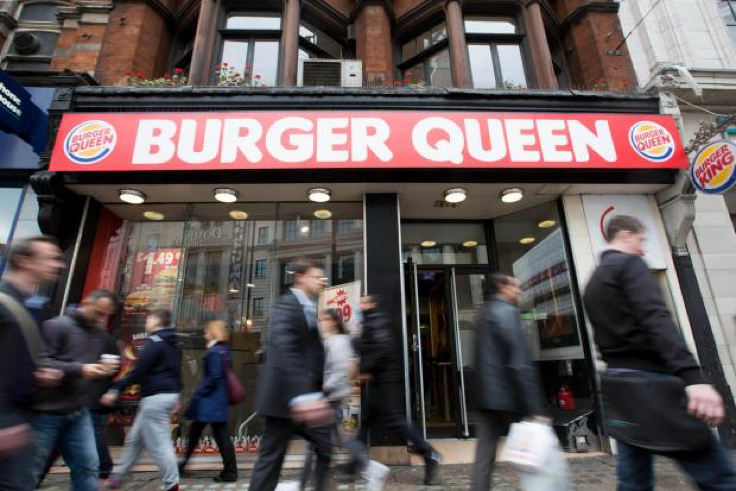Few restaurant chains are as recognizable as Burger King, but after a couple years in the slump they’ve kicked their brand into high gear with a new promotional strategy. Taking up the banner of corporate responsibility, B.K. has begun using high profile stunts to raise awareness for lesser-known causes, while simultaneously showcasing its revitalized brand personality. From reaching out to the deaf community to partnering with McDonald’s, Burger King is broadening the scope of its brand in a big way.
To bring awareness to National American Sign Language Day, on April 15 th , Burger King turned one of its Washington, D.C. locations into the most deaf-accommodating fast-food establishment in the country. They replaced their logo with the ASL sign for “Burger King,” they replaced all their menu items with sign-language equivalents, and they staffed it with ASL-speaking employees.
Then they took it even further. The King himself was there to greet the deaf as they came in, and he asked each person (using sign language) for their creative input on this question: what should the ASL sign for “Whopper” be? Watch their reactions below, and see the final product Burger King assembled from this promotion.
The point of this project was not to win the business of the deaf community (although maybe that was an added bonus) but to show that Burger King cares about people, and that it’s willing to use its prominence to give a voice to those who don’t have one. They want to win goodwill and spark emotional connections with their target market.
The next project Burger King unveiled was a much riskier endeavor, but it grabbed everyone’s attention. Last summer, in observance of Peace Day, B.K. launched their McWhopper proposal. With full-page ads in the New York Times and other leading papers, an interactive website, social media posts and a viral explainer video, Burger King extended an olive branch to longtime rival McDonald’s.
It suggested a one-time offering off the McWhopper, a combination of the Big Mac and the Whopper. It would be sold at only one restaurant, a Burger King-McDonald’s hybrid, complete with half-uniforms and half-décor, only in Atlanta, Georgia (the half-way point between their headquarters).
The McWhopper would symbolize two of the world’s biggest brands coming together and “burying their beef, with beef,” on Peace Day, setting an example for the rest of the world. Unfortunately, McDonald’s CEO Steve Easterbrook shot down the idea the next day, saying “We love the intention but think our two brands could do something bigger to make a difference. We commit to raise awareness worldwide, perhaps you’ll join us in a meaningful global effort?” He added in a post-script, “A simple phone call will do next time.” And like that, the McWhopper was dead.
But the awareness and promotion of the idea still made waves, as Burger King had hoped. Though it didn’t pan out the way they wanted, B.K. came out looking like the much friendlier, down-to- Earth brand, and that’s still a plus for them.
Easterbook’s rebuke hasn’t stopped Burger King from continuing its strategy, either. In honor of the Queen of England’s 90 th birthday, London’s Burger King franchise is changing its name to Burger Queen.
The creative energy coming from the half-century old brand can probably be attributed to the seismic leadership changes of 2010. After being purchased by 3G Capital, the Burger King executive committee was almost entirely replaced, this time with much younger officers. The current CEO, Daniel Schwartz, was only 33 when he was appointed, and his CFO was only 28. Outside of Silicon Valley, executives that young are unheard of.
The energy this new leadership team has brought is obviously reflected in its refreshing take on the B.K. brand, but whether it will revitalize the business at large has yet to be seen. One thing is certain, though: they know how to think outside the box, take their brand to dangerous new heights, and reach their target in uniquely creative ways.
Let’s Do #BRAIN_DING!




You must be logged in to post a comment.